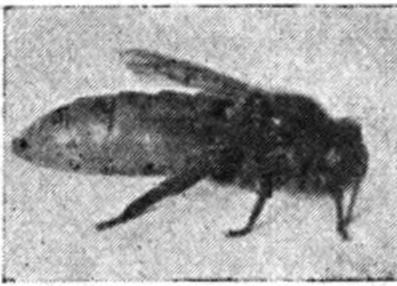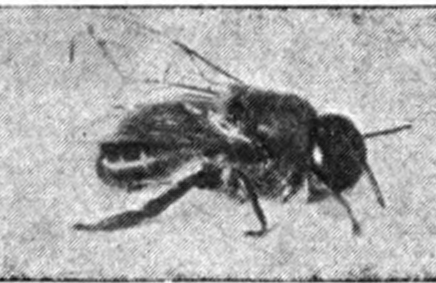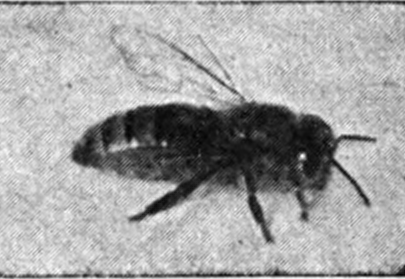The Honeybee Family
Description
This section is from the book "Bees For Pleasure And Profit", by Samson G. Gordon. Also available from Amazon: Bees for pleasure and profit; a guide to the manipulation of bees, the production of honey, and the general management of the apiary..
The Honeybee Family
In a beehive there are found three kinds of individuals-the workers, the drones, and the queen. The worker bees are females who perform all of the essential duties of the colony such as gathering food, building comb, nursing, guarding the entrance, etc., with the exception of laying eggs. This last duty belongs to the queen herself, who is a fully developed female bee-the one mother of the colony. The drones are male bees, who contribute nothing to the upkeep of the colony and whose only value is that of mating with the queen. Drones are tolerated in the colony only during a honey flow and mating season. It is largely within the power of the queen bee to control the number of worker bees in the colony. But in matters of this sort the worker bees themselves have something to say. For illustration, it is within their power to alter the shape of a cell in which a fertile egg has been deposited and so change the kind of treatment which the larva in this cell receives as to produce a full-fledged queen. This new queen at swarming time remains in the old hive home after the older queen has departed with those bees that make up the issuing swarm. These subjects of mating, egg-laying, and nursing, with others of similar kind, are extremely fascinating. They can not be fully explained here. It is assumed that the amateur beekeeper will want to know all of the interesting phases of beekeeping, when he has finally decided to undertake the work, and it is fortunate that splendid material-in our books, "Starting Right With Bees" and "ABC and XYZ of Bee Culture"-are available for his reading. Of these we shall have more to say elsewhere.

Queen.

Drone.

Worker
Fortunately, the prospective beekeeper is not confronted with problems similar to those found in some other pursuits in respect to the number and various qualities of different breeds. There is practically only one predominating race of bees-the Italians. They derive their name from the country where they have been known and reared for an unknown time. They are very gentle, and will not sting if handled properly. For all beekeepers they are the best strain of bees. Thus the beekeeper need have no fear that he will make a mistake in choosing a breed which may not prove satisfactory. Given a reasonably good location, a modern beehive, and a colony of Italian bees of proper strength, the amateur beekeeper may be sure he has a right start. The results he will achieve from that time on will depend upon his management. If he will study his bees, learn their ways, and acquire a comprehensive-understanding of their traits, they will pay him for his time and efforts in a most generous way.
Continue to:


